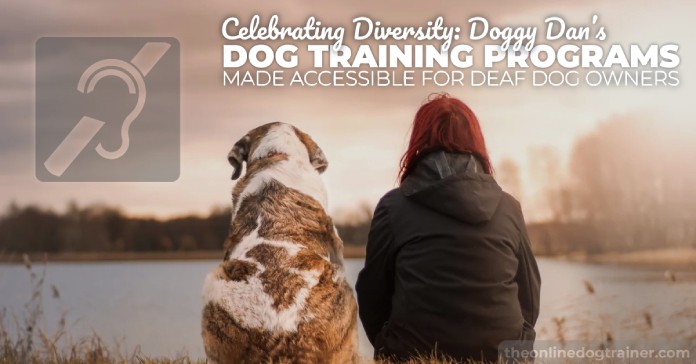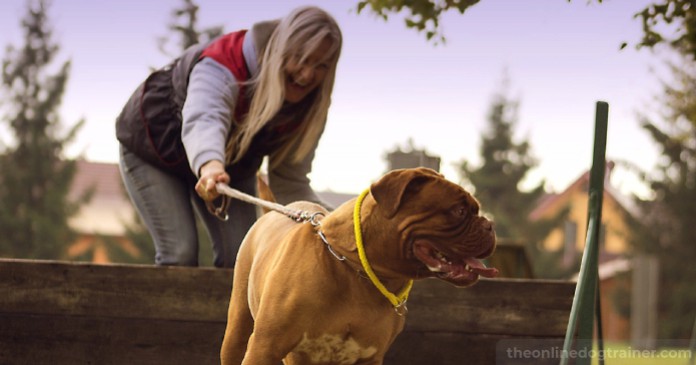
One of the greatest joys in life is dog ownership. Knowing this, we believe everyone should have the opportunity to benefit from the companionship of a canine!
This being said, we know there are some circumstances that make owning and training a dog a little more challenging. And upon reflection of our own training programs, we quickly realized that our own programs limited the ability for dog owners with disabilities—particularly hearing loss or deafness.
Noticing our shortcomings in this area, we jumped into action to add subtitles that will make all of our programs and videos accessible to anyone in need of dog training help!
(Check out our most popular training program, The Dog Calming Code, now!)
If you struggle with hearing loss or you are deaf and love dogs, there’s absolutely no reason you can’t successfully adopt a dog and train him to be a wonderful companion in your home.
However, if you have worries surrounding your circumstances you're not alone. Here are a few of my thoughts on why you shouldn’t let a hearing impairment stop you from becoming a dog owner…
#1: Training a Dog Does Not Require Auditory Sounds

If you look at most dog training programs, they are founded on techniques that prompt dog owners to vocally communicate with their canines.
Of course, you most likely have the ability to speak. But, in all honesty training a dog doesn’t have to rely on any form of auditory noises. Therefore, sounds and vocal cues can be completely taken out of the equation.
Dogs rely on a lot of visual cues and body language to understand what is being asked of them. So your ability to hear really has no impact on whether you’ll be able to train your dog or not.
#2: Dogs Thrive on Sign Language Based Commands

As I just mentioned, dogs tend to rely on body language and visual cues for instruction. While vocal commands such as “sit” or “stay” can be very powerful, dogs will respond just as well to non-vocal sign language commands.
Training your dog to respond to visual cues actually hosts many benefits.
First and foremost, teaching your dog signs gives you the power to communicate with your dog without having to disrupt the things you’re doing, such as having a conversation or watching a tv show.
Second, sign-based communication forces your dog to truly pay attention and focus on you. Without verbal cues, your dog has to continue to “check in” with you as he looks for your leadership.
Finally, there’s always the potential for your dog to struggle with hearing loss due to age or an accident. If your dog already knows sign language, your training efforts will always be effective in the event that your dog develops a hearing issue.
#3: Any Dog Can Be Trained to Help with Hearing-based Tasks

We all know that service dogs can be used to help people with all kinds of disabilities. But, we don’t always talk about how beneficial it can be to have a dog with superb hearing around to help with basic tasks, like signaling when someone is at the door.
If you’re deaf, having a dog around can be a real advantage! And truth be told, you don’t have to send your pup through a rigorous service dog training program to teach him how to lend a paw around the home.
As long as you follow a solid training program—like my Dog Calming Code program—you can teach your dog any basic command that you might find helpful around the house!
When it comes to dog ownership, there really are no limitations as long as you are able to provide your pup with a safe living space and are financially able to care for your dogs needs.
We are so thrilled that all of our programs can be used amongst anyone with a hearing disability, and we look forward to welcoming you into The Online Dog Trainer family!
Cheers,

~Doggy Dan 🙂






